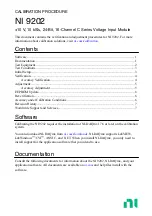
Installing and putting a TIM into operation
4.7 Startup activities of the TIM module
Station control system
174
System Manual, 07/2009, C79000-G8976-C178-07
Group error LED
If a problem occurs during startup, the red group error LED (SF) lights up and a diagnostic
interrupt is sent to the CPU. A message to this effect is also entered in the diagnostic buffer
of the TIM. In the chapter on the SINAUT Diagnostics and Service tool, you will find a table
with a summary of all the errors that can cause the group error LED to light up, as well as a
detailed description of each error message.
Note
After transferring the SDBs to the TIM, the group error LED flashes for approximately 10
seconds. This indicates that the TIM has registered the transfer and will automatically start a
reset after a further 10 seconds and the parameter assignment from the newly transferred
SDBs will be adopted. The TIM then behaves the same as following power "ON".
Default startup
If the situation arises that the TIM 3V-IE / TIM 3V-IE Advanced can no longer be addressed
over the MPI interface of the CPU or its own Ethernet interface following startup due to a bad
parameter assignment, the TIM can be returned to a defined state using the default startup.
Following the default startup, the TIM can have new parameters set both over the MPI
interface of the CPU and over its own Ethernet interface.
To force a default startup, follow the steps outlined below:
1.
Turn off the power for the TIM.
2.
Press the reset button accessible from the front, turn on the power while holding down
the reset button.
3.
During hardware initialization (LED phase 1), the SF LED is turned off briefly and then
turned on again. Release the reset button at the moment when the RUN LED stops
flashing and the SF LED is turned on again.
4.
Wait until the startup of the TIM is completed and the default startup is signaled by the
LEDs.
5.
The TIM can then be supplied with its parameters over the MPI interface of the CPU or its
own Ethernet interface.
Note
With the CPU types CPU 312, CPU 312-C, CPU 313-C, CPU 314, CPU 314-C,
CPU 315-2 DP and CPU 315F-2 DP, the TIM is assigned MPI address 3 following a
default startup. If another subscriber on the MPI bus already has MPI address 3, a
conflict will arise. You will then have to disconnect one of the two modules temporarily
from the MPI bus to be able to transfer the parameters (including the correct MPI
address) to the TIM.
6.
Restart the TIM on completion of the parameter assignment.
















































